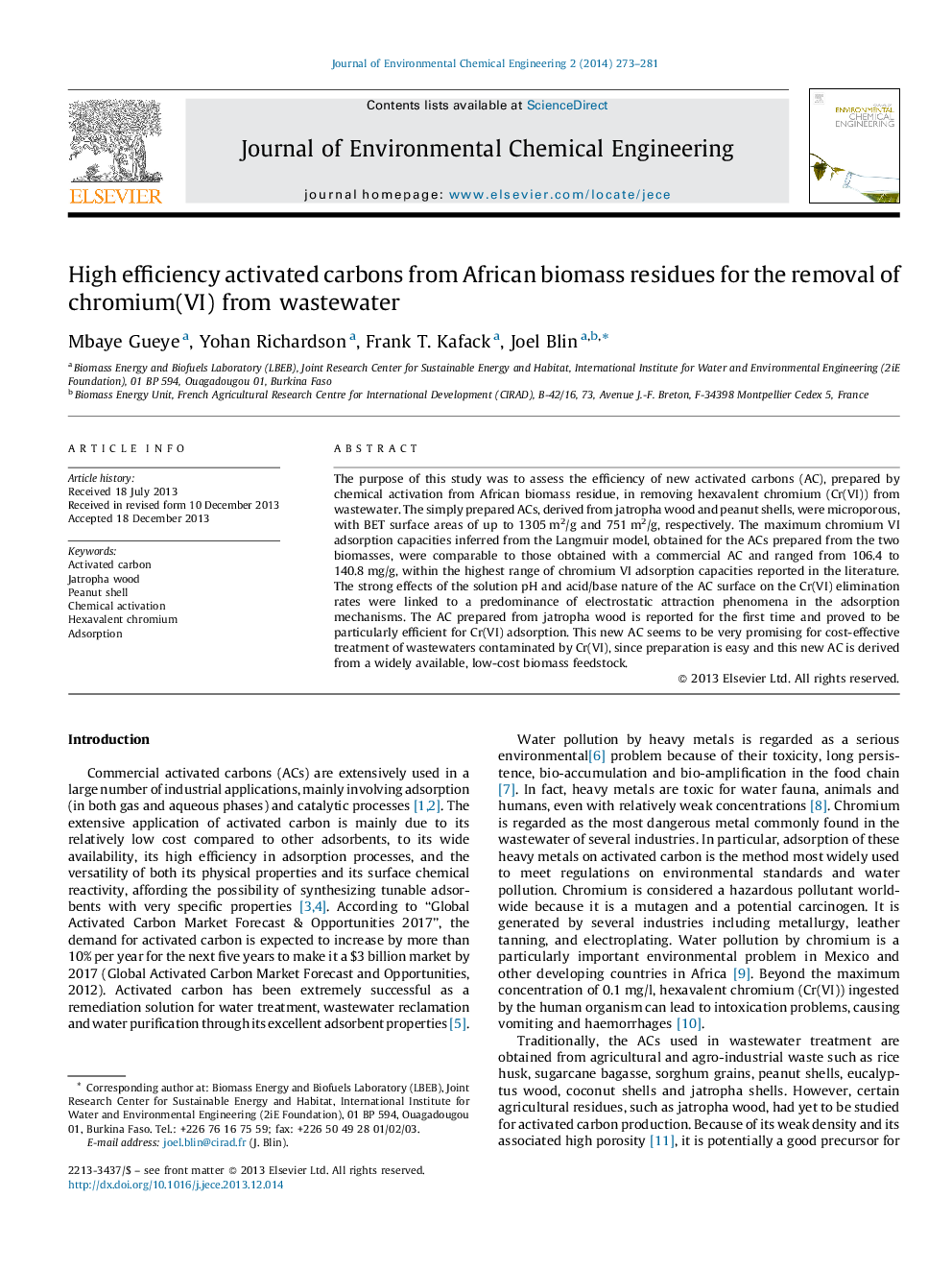| Article ID | Journal | Published Year | Pages | File Type |
|---|---|---|---|---|
| 222142 | Journal of Environmental Chemical Engineering | 2014 | 9 Pages |
The purpose of this study was to assess the efficiency of new activated carbons (AC), prepared by chemical activation from African biomass residue, in removing hexavalent chromium (Cr(VI)) from wastewater. The simply prepared ACs, derived from jatropha wood and peanut shells, were microporous, with BET surface areas of up to 1305 m2/g and 751 m2/g, respectively. The maximum chromium VI adsorption capacities inferred from the Langmuir model, obtained for the ACs prepared from the two biomasses, were comparable to those obtained with a commercial AC and ranged from 106.4 to 140.8 mg/g, within the highest range of chromium VI adsorption capacities reported in the literature. The strong effects of the solution pH and acid/base nature of the AC surface on the Cr(VI) elimination rates were linked to a predominance of electrostatic attraction phenomena in the adsorption mechanisms. The AC prepared from jatropha wood is reported for the first time and proved to be particularly efficient for Cr(VI) adsorption. This new AC seems to be very promising for cost-effective treatment of wastewaters contaminated by Cr(VI), since preparation is easy and this new AC is derived from a widely available, low-cost biomass feedstock.
